I love a good mystery in the family tree. It motivates all my detective instincts. I have always liked detective stories, logic puzzles and clueless crosswords. There is nothing more satisfying than being presented with a few good clues and having the time to solve the whole thing.
The present puzzle was my son’s Y-DNA results which matched no one surname in particular but matched his own surname not at all. It was something of a shock yesterday, but I slept on it and this morning I was ready to look into it with some objectivity.
First I sought advice via some FtDNA Projects, and the advice I received was immediate and very helpful. Someone told me about the TiP Report, which gave me the following very useful guide:
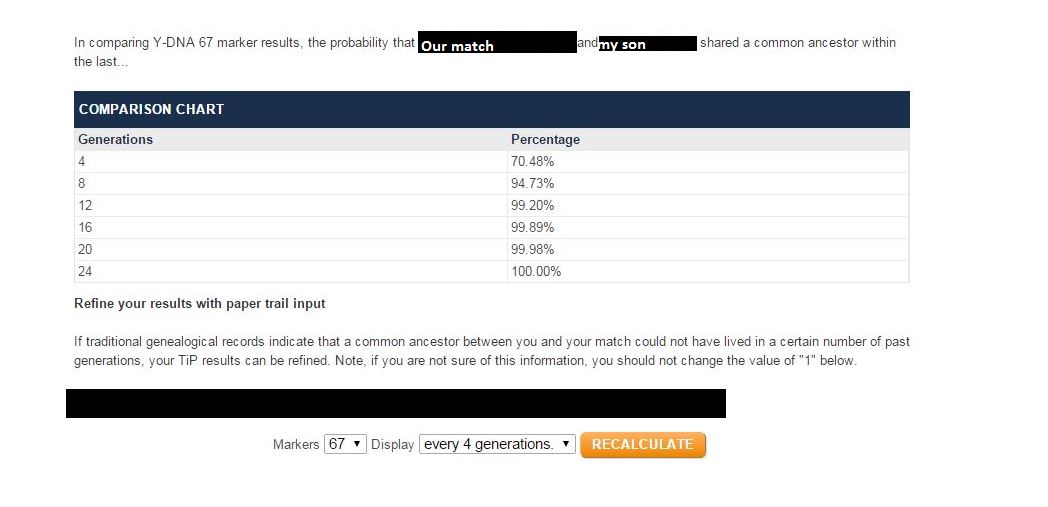
TiP report showing the likelihood in percentage form of a common ancestor with this match at various generational levels. closest Y-DNA Match (Click to enlarge)
I have read up on MtDNA where a genetic distance of 1 can mean thousands of years. Y-DNA seems to change with greater frequency. For our particular match, the most recent common ancestor was much closer. The earliest direct paternal ancestor of our match was Richard Creed of West Pennard Somerset, born 1730. Those percentages were highly in favour of a genealogically recent common ancestor. Our earliest known paternal ancestor Patrick O’Keefe was seven generations above my son. I was beginning to think the non-O’Keefe ancestor might be Patrick’s own father, since I was having so much trouble finding his origins.
Just to be sure, I looked closer to home. The chart said the chances of a common ancestor at four generations was 70.48%. That’s pretty high. Four generations was Percy O’Keefe, born 1893.
The odds were much greater for eight generations – 94.73%. Maybe, I thought, Jane had been pregnant when Patrick met her? We really don’t know when they married, only when John O’Keefe was born.
However, there was another even stronger possibility. Mary Ann Johnson, the wife of Patrick’s eldest son John.
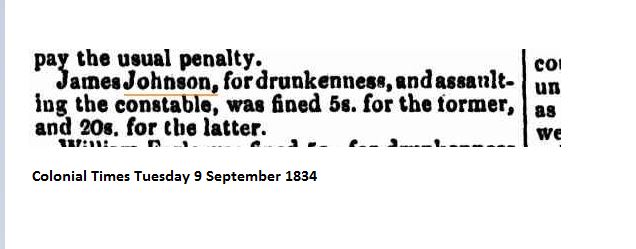
James Johnson, father of Mary Ann Johnson. “Hobart Town Police Report.” Colonial Times (Hobart, Tas. : 1828 – 1857) 9 Sep 1834: 6. Web. 10 Feb 2015 <http://nla.gov.au/nla.news-article8647801>.
Adam James Johnson was a convict from Scotland. It’s hard to tell, but it looks like he was a quiet, hardworking man until he got some drink into him. Alcohol made him violent. He was doing very well in Hobart until he met trouble in the form of the irrepressible convict woman Ann Livingstone.
Ann was just a child when she was transported from Scotland – still only fourteen. She’d had the toughest life imaginable and among her several prison spells was one for prostitution at the age of twelve. We can only conjecture what led her to those straits. In court at the age of fourteen, she cursed the judge who passed sentence on her and held her head high. She was a fighter. In Hobart Town, she never settled as a prisoner. She even broke her arm while climbing over the wall to escape, then she absconded from the hospital.
James Johnson and Ann Livingstone married in 1841, and their eldest daughter Mary Ann was born in about 1838. So was she theirs? We don’t know, but raising someone else’s child would possibly be the first unselfish thing that Ann did. She might have done so, she had no clues about raising children but she was always there for them. She was her own worst enemy and her children’s too, but she certainly helped them as much as she could.
Here she is in the paper:
The Hobarton Mercury – Wednesday 9 January 1856
POLICE OFFICE .- TUESDAY.Assault.-Mrs. Elizabeth Davis, of Campbell-street, charged Mrs. Ann Johnson of the same locality with assaulting her, without any provocation.
From the complainant’s statement, as well as that of three witnesses, it appeared that she had been very roughly treated, having been pulled into the defendant’s yard by the hair of the head, and then, having a broom handle thrust into her eye; the complainant produced a portion of hair, which, she said, was torn off by the roots.
The defendant said, all she had to say was, that it was boxing morning, and the witnesses, called by Mrs. Johnson were all groggy (A laugh.) She called two of her daughters, who both stated, that Mrs. Davis was drunk, and that she had called one of them “most horrible names” : they saw nothing of a broom stick, nor any violence used.
The defendant was fined 50s and costs and allowed a week to pay the amount.
As best we know, the family consisted of five girls and one boy, but they were born at a time in Tasmania’s history when people could be born and married and no record be found. Mary was the eldest, then Louisa, Susan, Margaret, Robert and Sarah.
A DISREPUTABLE CHARACTER. – Margaret Johnson, aged 19, was charged with being, a person of disreputable character,and with behaving in a disorderly manner in Bathurst Street at 2 o’clock on Thursday morning. The defendant pleaded not guilty. Police Constable Michael Bourke deposed to the facts of the case, and the Bench ordered defendant to be imprisoned for a month.
“LAW.” The Mercury (Hobart, Tas. : 1860 – 1954) 18 Mar 1865: 2. Web. 10 Feb 2015 <http://nla.gov.au/nla.news-article8831712>
There are tons of similar reports. The family was very difficult to live near. As the children grew up they became as familiar with the courts as their parents. With her very common name it is difficult to pick out our Mary from others of the same name, but no doubt she was there in court too. In the end, the family were banned from the township of Hobart, when they moved out to New Norfolk.
It’s a lovely little town, one of the earliest settled in inland Tasmania. It became the home of resettled Norfolk Islanders which is where the name came from. Further inland and over the hills was the isolated town of Hamilton, beyond which there were no roads and the law never went. A lot of families lived in the forests; loners who had no trust of societies, or who did not like people. There were shepherds and bushmen and escapees from the law, and those who were simply pushed out of the towns for their antisocial behaviour. Susan Johnson married John Hall and they moved out to the woods near Hamilton. Mary Ann went with them and returned as Mrs John O’Keefe. No marriage record has been found for John and Mary, but a marriage probably did occur.
What Patrick and Jane thought about this alliance we don’t know, but Patrick and Jane were scrupulously honest and very legally compliant. John himself was only in court over marital matters and never for committing a crime.
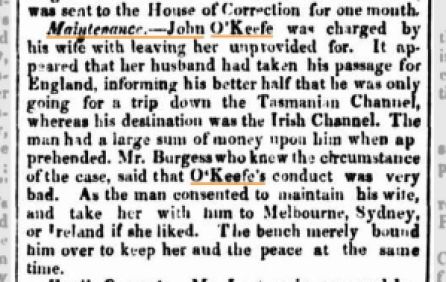
“POLICE INTELLIGENCE.” The Hobart Town Mercury (Tas. : 1857) 4 Feb 1857: 3. Web. 10 Feb 2015 <http://nla.gov.au/nla.news-article3242824>.
John and Mary’s first son was born in 1856, and the following year John was gone. Yes, his conduct looked bad, but possibly Mary was not completely blameless. Now that John had returned, life went on for this couple. William was born in 1861, and Arthur in 1866.
John and Mary had no more children that we know of, but we only found James a few years ago so more may show up. Mary passed away in 1881 and a few years later John married Mary’s sister Susan, who had just divorced her husband John Hall in a messy and very un-private divorce. John and Susan seem to have been completely happy and I can’t help wondering if they were carrying the candle for each other since their young days, when Susan was newly married to John Hall and they were all out in the Hamilton woods. They seem to have connected several times over the years.
Which brings me to John Creed born in 1838, the son of Stephen Creed and Martha nee Fearnside.
Stephen Creed emigrated to Tasmania on the Persian in 1832, and married Martha in New Norfolk in 1837. Their eldest son was John Creed, born 16th August 1838. Stephen Creed was a farmer according to the children’s birth registrations. Half the children were registered in Hobart, but Stephen still gave his address as New Norfolk. He must have travelled in. There was a paddle steamer running between Hobart and New Norfolk in those days, which was sorely missed when water transport stopped in the 20th century.
Given the rather uncommon haplogroup, any Creed wasn’t going to do. The Creed I sought – and hoped not to find if I’m honest – had to descend from West Pennard in Somerset, and from a particular family there. I tracked Stephen to Victoria, when John Creed remained in Back River very very close to the O’Keefe house on the Derwent River. The Victorian death registers give parent names. Stephen was the son of Richard Creed and Priscilla Newport. I found their marriage registration in Somerset, England. We were back to the right county. Richard was the son of John Creed. John Creed was born in West Pennard, Somerset, England. John Creed born 1752 was the son of Richard Creed born 1730 – the very same ancestor as our Y-DNA match.
It wasn’t the answer I wanted, but too much is fitting together. A project manager told me today to remember the other possibilities – perhaps an unmarried sister of John or Mary was the mother and they simply adopted William? Or maybe John Creed’s presence is coincidental. Can there be that much coincidence? But as the project manager also said, the chances of a Somerset Creed meeting a woman in Clare, Ireland are very very remote. The difference in culture and religion coupled with the geographic barrier were strong. Of course, a Creed could have been a soldier stationed in Ireland, but all identified Creed babies have stayed very close to home and been quite traceable. You never know, but to find a Creed of the correct family right there in a hamlet of six cottages where Mary was living in an unhappy marriage, being a woman from a family of loose morals to start with – it’s pretty suggestive.
I have altered my family tree already, to show John O’Keefe as a stepfather to William. I’ll change it back if more data comes to light. I’m now waiting for my father in law’s family finder test to be processed, to see if he has any matches with the families of the Creed wives. This is what will show the generation which connected.
The worst of it is that my father in law has always hoped I would find a connection between our O’Keefe family and the famous Australian singer Johnny O’Keefe. I don’t think it’s going to happen.
A DNA test doesn’t hold its punches, but learning the truth is extremely satisfying. I admit I held my breath when logging in to check my parents’ tests for the first time and am glad they confirmed our relationship. However, I’ll keep going with the testing. I’d much rather know than not.

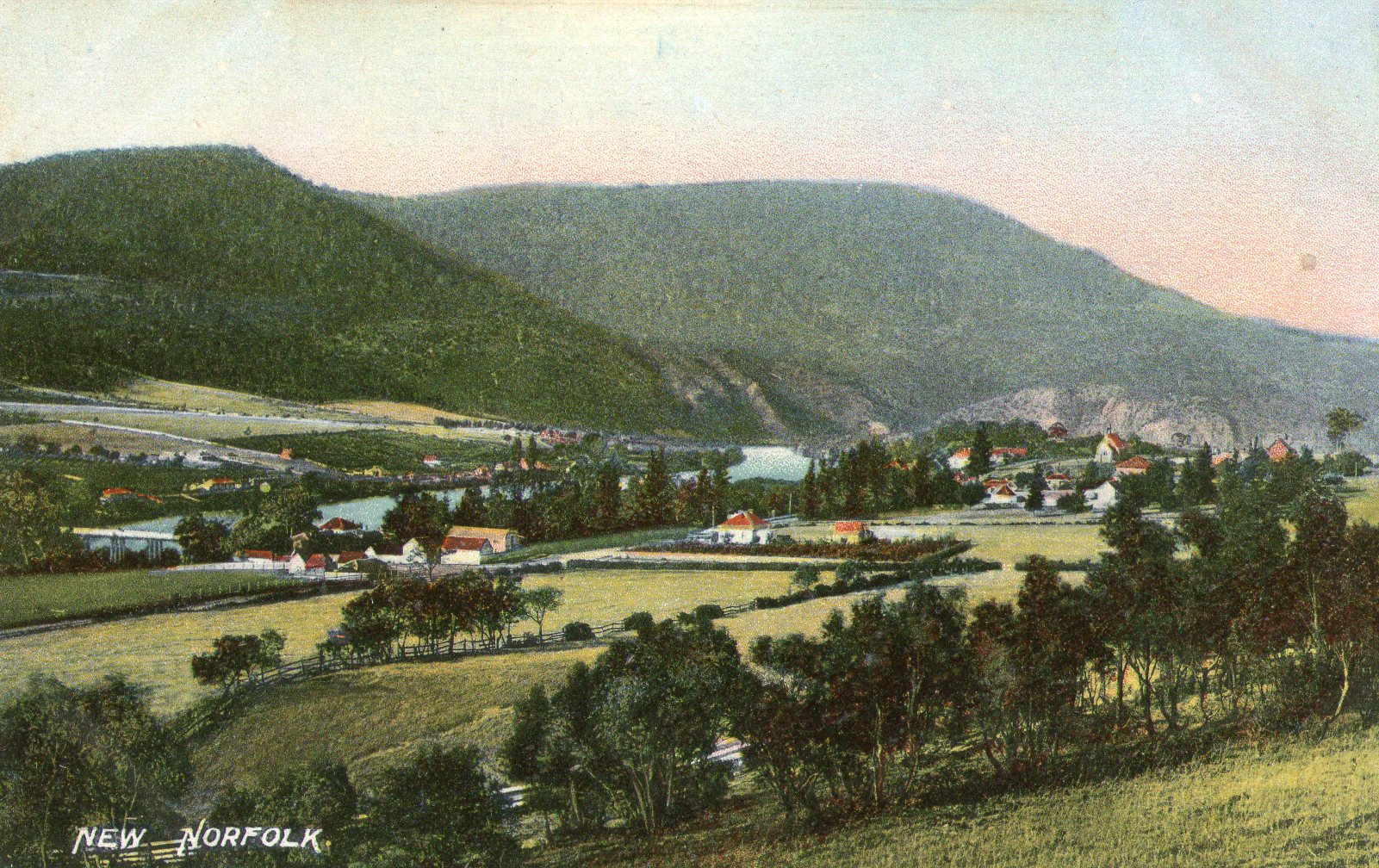
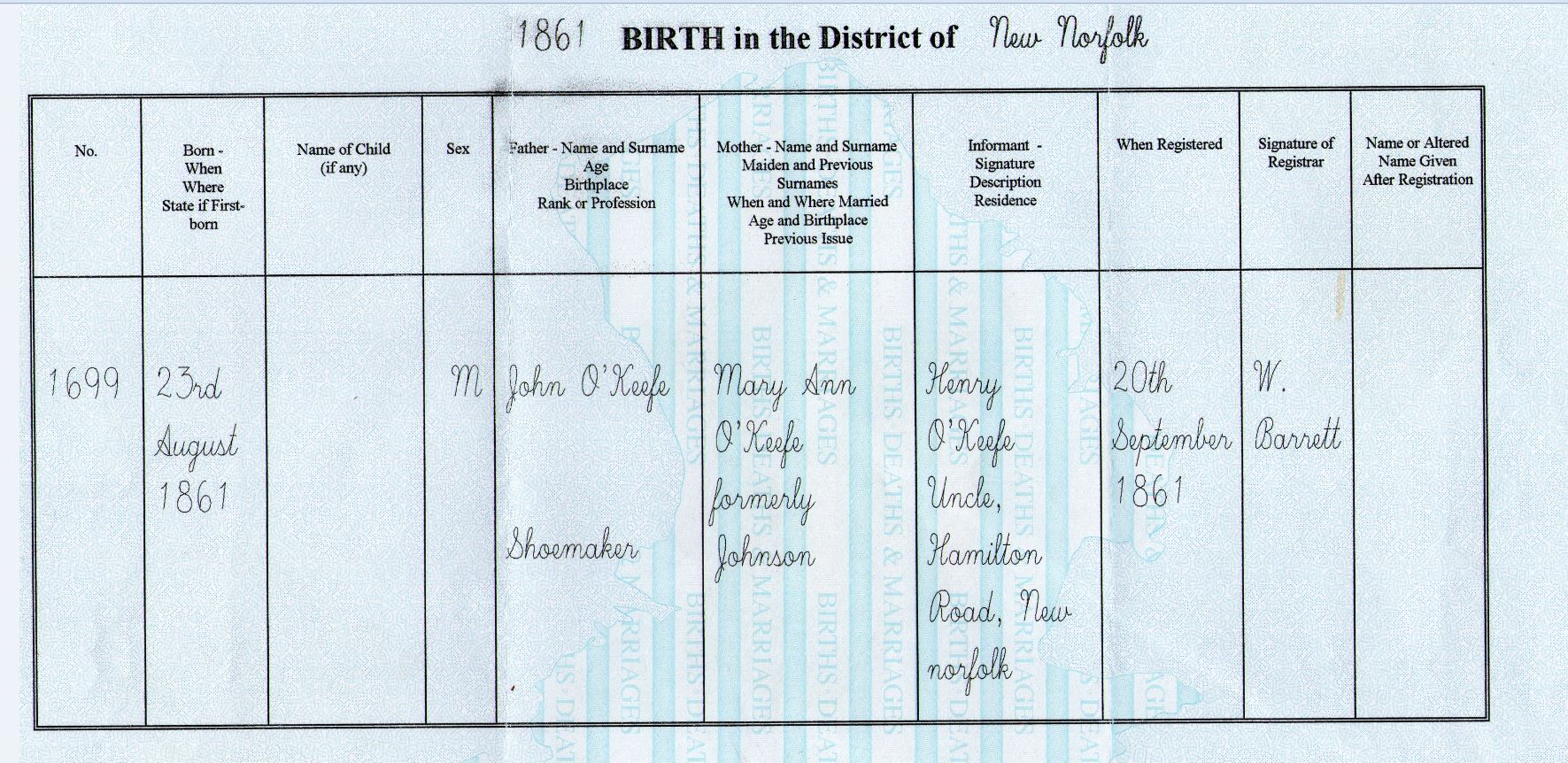
Leave a Reply